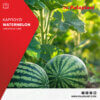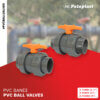
- Tomato (Solanum lycopersicum, Gen.: Solanaceae) is herbaceous annual, biennial and rarely perennial plant.
- Although tomatoes are botanically classified as fruits, their use in cooking and dietary habits has established them as vegetables, similar to pumpkins, aubergines, cucumbers, and peppers. Tomatoes are cultivated both outdoors and in greenhouses worldwide.
- Tomatoes originate from South America, specifically Peru, where various wild tomato variants still grow today. From Peru, wild tomatoes were transported to Central America (Mexico) along with corn seeds, initially considered a weed. They were then introduced to Europe in the 16th century by Spanish explorers, and in Greece, they appeared in 1818, marking the beginning of their cultivation. Tomato cultivation is the most significant vegetable crop in Greece, with processed tomato products leading in exports, while Greece ranks among the top producers of industrial tomatoes.
- Tomatoes are highly nutritious with numerous health benefits. They are rich in vitamins (vitamin C, K, A), minerals (potassium), and antioxidants. Among the antioxidants, which protect cells from free radical damage, are Lycopene, a powerful antioxidant that gives tomatoes their red color and has been linked to reducing the risk of various types of cancer, particularly prostate cancer, and Beta-Carotene, which contributes to eye and skin health. Tomato fruits are high in dietary fiber, aiding in digestive health, and has a high water content (about 95%), helping to hydrate the body, especially during the summer months.
TOMATO OUTDOOR CULTIVATION IRRIGATION
- What are the water needs of outdoor tomato cultivation?
Adequate water supply for tomato plants during the growth period is crucial for overall yield and the production of quality fruits. Outdoor tomato cultivation can consume an average of up to 700 mm of irrigation water per growing season, although a significant portion of water needs in outdoor cultivation can be met by rainwater (depending on weather conditions). It should be noted that tomato plants’ water requirements vary at different growth stages. The most critical irrigation periods in tomato cultivation are flowering, fruit setting, and fruit development. Generally, before these stages, water needs are lower. Additionally, water requirements can differ significantly under varying weather and soil conditions; for instance, heavy clay soils usually need less irrigation than sandy soils, while during periods of intense drought, plants will require larger amounts of water. Lastly, it is essential to avoid watering the foliage, as excess moisture on the leaves creates ideal conditions for fungal growth.
- What is the most recommended irrigation system for outdoor tomato cultivation?
Irrigation of outdoor tomato crops in the recent past was done with furrows, and afterwards various irrigation methods were tried either with micro-sprinklers or drip irrigation. Drip irrigation is now considered the most recommended system as it significantly contributes to water economy, supporting the overall effort to conserve water.
Palaplast has a wide range of products that can be used to install a reliable and efficient drip irrigation system for outdoor tomato cultivation:
- Irrigation pipes AGROPAL HDPE 80 και LDPE
- Pressure Compensating Driplines, Driplines (Paladrip – Palaplast, Paladrip-XL – Palaplast, Paladrip-Slim – Palaplast)
- Dripline fittings
- Clamp saddles
- Filters


